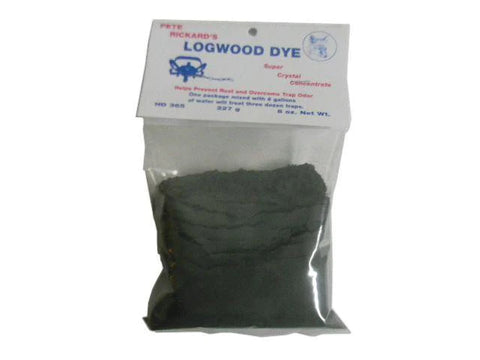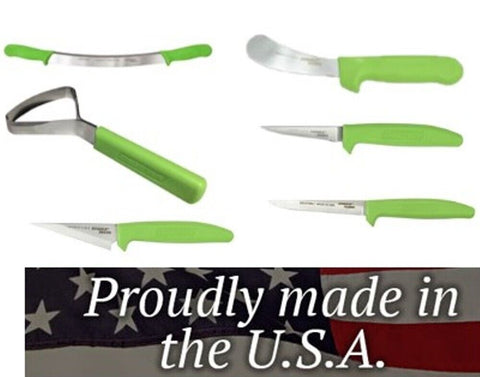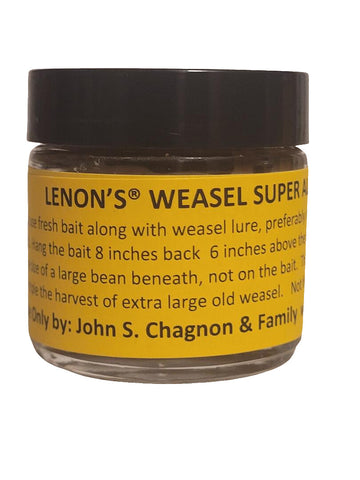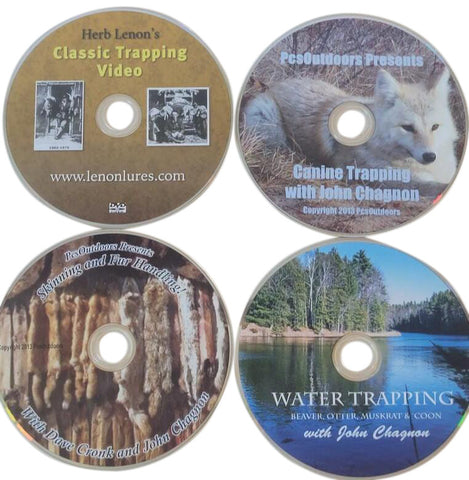Raccoon, Opossum, Skunk and Weasel Trapping Book by Herbert Lenon Free Online Version Everything How to Trap Raccoon, Opossum, Skunk and Weasel Trapping
Raccoon, Opossum, Skunk and Weasel Trapping by Herbert Lenon
Copyright 1946 Revised 2022

Probably the easiest of all furbearers to trap and the furbearers that are of interest to more trappers than are any others, with the exception of the widely distributed and valuable little muskrat, is the skunk.
Following the muskrat and skunk in trapping popularity is the weasel, opossum and raccoon.
In comparison with the coyote, fox and mink, the raccoon, skunk, opossum and weasel have a low degree of intelligence in-so-far as trapping is concerned.
Occasionally one finds one of the specie that has become trap shy, but it is seldom one does.
I have trapped since I was 6 years of age, specializing in coyote, fox and mink, but have taken a great number of the lesser fur bearers.
Trapping Books Written By Herbert Lenon FREE online versions.
- Secrets of Successful Trapping Fox, Coyote, Bobcat Trapping by Herb Lenon
- Beaver and Otter Trapping Book Online by Herbert Lenon
- Mink and Muskrat Trapping Book Online by Herbert Lenon
- Raccoon, Opossum, Skunk and Weasel Trapping Book Online by Herb Lenon
Care of Traps
It is not necessary to boil and deodorize traps for taking these 4 furbearers, however I strongly advise that one does so because by properly caring for ones traps, one doubles or triples the life of ones traps.
Purchase Lenon Lures Wax and Logwood Trap Dye
Purchase Lenon Lures Wax and Logwood Trap Dye
Besides increasing the life of ones traps, one has the advantage of catching a mink or fox occasionally in ones traps, and the knowledge that ones traps are more sure to be in working condition when the animal visits the set: Not rusted until the jaws or pan will stick.
A trapper who is too shiftless to properly care for equipment as valuable as traps, is probably too shiftless to succeed. To deodorize traps and remove oil and rust, one should boil them for an hour in a solution of 1 can of lye to 5 gallons of water, allow the traps to soak overnight in the solution and again boil an hour, pour off the lye and wash the traps in clean water. To prevent rust and corrosion, boil the traps in a solution of one-fourth pound of extracts of dyewood or logwood, to 5 gallons of clean water, boil an hour or two, hook the traps from the boiling water and hang up to dry.
Tag alder, soft maple, oak and various barks may be used if they are available, the solution should be strong enough to color the traps a dark blue.
New traps will not color unless allowed to rust slightly before boiling in the dyeing solution.
General Information
When setting traps for any animal one must be sure to adjust the traps pan so it sets level with the jaws, too many times I have seen traps set by amateurs with the trap pan way high above the jaws, so high that it was impossible to cover the trap, so high that any animal visiting the trap would step over it. In setting a trap for any animal where the trap is set dry, it should be set level with, or a little below the level of surroundings, it is just as natural for an animal to step or jump over a trap setting above the level as it would be for you to step over a stone or log laying in your path.
All traps should be covered lightly, just enough to conceal the outline of the trap, even the four easily trapped animals on which this book is written are quite likely to step over a trap, or any other unusual looking object or place in their path.
The Raccoon
Lenon Lures Stock Skinning & Fur Handling with John Chagnon and David Cronk
The raccoon is one of our most interesting animals, it is probably the only American furbearer that is as much to home in the wettest, densest swamps, living on frogs, crayfish and minnows, as it is in the highest, driest hardwood ridges living on nuts. Frogs, crayfish, minnows and carrion is the swamp diet, corn, nuts and various other such foods are the foods of the highland coon. When prospecting for raccoon the most likely area is at or near bodies of water, lakes, ponds and streams are where one finds the most sign, for in such places raccoon hunt for their food.
In farming areas, where corn is grown, it is a good bet to check all corn fields for sign, and in hardwood areas, it is well to check for sign in years when there has been a good crop of various nuts. Where the most food is easiest available is where the animals are most likely to be plentiful.
When setting traps one should never place them anywhere except where signs are found, if there is no sign of the animal being there, then there is no reason to believe they will be there after the trap is set.
Another important factor to consider in the trapping of any animal where small baits or lure is used to lure the animal to the trap, is the prevailing wind direction for the section and the season one is trapping.
As one depends on the odor of the lure being carried to the animal, one must then necessarily place the trap up wind so that the odor will be carried across the animals line of travel.
Skinning and Fleshing
Raccoon are skinned open and stretched nearly square, the body of the pelt is square with the head and tail exactly in the center and projecting out from the square part.
To skin, split from the tip of the tail straight up the bell to the tip of the lower lip, then split from this cut straight out to each of the four feet.
Be careful in skinning that you do not cut or score the hide, and in cutting the ears, eyes and nose free use care that you do not have a jagged hole that spoils the look of the pelt. Later in this book I will give instructions for fleshing skunk, raccoon and opossum, I will give those instruction for all in one chapter, as all are fleshed the same.
The Opossum
Opossum are not usually found quite far north, where winters are severe, opossum are seldom found in any number further North than the South central part of Michigan and states in corresponding latitude, being far more plentiful in the Southern states than in the Northern.
I spent last winter, 1945, in Florida, the raccoon, skunk and opossum were unbelievably numerous there.
Food and habits of the opossum are similar to those of the raccoon and information given on raccoon applies to opossum.
The Skunk
Little need be said about the habits of skunk, they like other animals are found where food is available.
During spring and early summer, eggs of birds and turtles, young mice, rabbits and other small animals are on the skunk’s diet, however later in the year their principal food is grasshoppers, beetles, crickets and such food with an occasional supply of food found where stock or other large animals have died. Frogs, salamander and such small foods are relished by the skunk. As skunk need a dry place for their winter den, and as they feed on grasshoppers and beetles, the most likely places to look for them are on dry ridges and deserted farms or large dry marshes.
Skinning Skunk and Opossum
Skunk and opossum are skinned cased, both are skinned the same except that the tail of the opossum is discarded, white the tail of the skunk is split, fleshed and stretched.
In skinning, first split from the hind foot to the vent, ripping the pelt somewhat inside the leg, then from the vent to the tip of the tail on skunk and to the butt the tail on to possum. In skinning skunk one may leave a patch of fur about 3 inches in diameter around the vent and over the musk glands, by so doing there is much less chance of cutting into the musk gland or pressing some of the essence out.
After cutting around the hind feet and skinning out the tail and legs, I have found it best to then pull the pelt from skunk or opossum, letting the fat adhere to the hide and removing it later.
Cut off the front feet just at hairs edge and pull the hide off, then pull the pelt to the ears, cut free and pull to the eyes, cut the eyelids free very carefully and pull to the nose and lips, do not tear the pelt off the nose and lips, cut it free so the pelt looks neat.
Skinning The Weasel
The weasel is skinned the same as a skunk, fox, or mink, great care is necessary in removing the tail to prevent the tail coming off. If you are troubled with the hair coming off the tail, soak the tail a few minutes in warm water, then skin, the tail can be dried and brushed after the pelt is stretched.
The pelt should be stretched long and narrow, in fact in the same length and width proportion as the body of the weasel. Use a very thin board, place as small pointed board about one-fourth inch high under the belly to keep the pelt from shrinking tight to the board and facilitate removal of the dry pelt.
Fleshing Raccoon, Skunk And Opossum
Before fleshing raccoon I stretch them out square, using abut 4 nails on each side, but in fleshing skunk and opossum I slide the pelt over an inch board about 8 incheswide and nail only at the tail and center of belly.
For a fleshing tool I make my own thus.
Choose a piece of good hardwood board, one and one – half inches wide, one inch thick, ten inches long.
Round off one end for 7 inches for the handle, cut the other end off with a saw at a 45 degree angle and not quite straight across, thus the end is sharpened like a wood chisel. To finish sharpening and harden, rub the end of the blade where it was sawed off back and forth on the hot lid of a stove, thus burning off the saw cut roughness and smoothing and sanding until it is quiet sharp.
This makes the best flesher I ever used, one can flesh rapidly without danger of cutting pelt with the wood blade.
When fleshing raccoon, start at the head and flesh back toward the tail, thence outward to each side.
When fleshing skunk and opossum, stretch the pelt on he board, beginning at he ears, flesh to the tail gradually working around the pelt until well fleshed, then turn the pelt so the center of back and belly is at edge of the board and finish fleshing he parts not fleshed at first position.
I have found that a skunk or opossum pelt fleshes best when cold. With some experience one can place the flesher at the ears and in one motion flesh a strip the width of the blade to the tail. After raccoon, opossum or skunk pelts have dried 3 days, rub well with paper or sawdust to remove oil.
Killing Trapped Skunk

Group of young trappers from Minnesota that put Lenon's Skunk and Opossum Lure to good use. The musk from those skunks was added to a batch of lure that will hit the market in 2023.
When one is trapping skunk near water, one can fasten the trap to a 12 foot pole, nailing the trap chain up from the end of the pole six inches.
When a skunk is caught, approach slowly, when the skunk raises its tail, stand still, thus approach until you can reach the pole, pick up the pole slowly and begin to pull, as soon as you start to pull the skunk, it pulls back, and seldom if ever throws its musk, lead the skunk out in the water, twist the pole until the trap is tight to the pole, then slowly push the skunk under water. If possible, leave the skunk under water several hours.
Where there is no water one can kill a skunk with a long needle. I have killed many and saw many more killed under houses and buildings this way, never saw one throw its musk.
Buy a sack sewing needle, the kind used in sewing sacks of grain and potatoes, get one 7 inches long.
Drive the eye end of the needle firmly in a six- or eight-foot butt of a cane fish pole, straighten the sharp end of the needle by heating, sharpen the point and both sides of the needle back to where it is round, hone this needle so it sharp and smooth as a razor. The needle should protrude six inches.
To kill a skunk, approach slowly, stopping every time the skunk raises its tail, slowly reach out with the pole letting the skunk smell of it to allay its fear, place the needle against the skunk’s breast, just above the breastbone, slowly push the needle through the hike and into the heart, if the skunk does not gasp and die, pull the needle half way out and again try to hit the heart. When the heart is penetrated the skunk gasps and is dead.
The skunk does not seem to feel any pain, they usually seem to push forward against the needle.
The first time I ever saw this done I was astounded, a Govt hunter killed 3 skunks under a meat market, and not one scented a bit, I have killed many and never had even one throw its musk.
The Sets
The Cubby set for raccoon, skunk and opossum. The cubby set is widely used for skunk, raccoon and opossum, especially in areas where it freezes and sleets during season. These cubby's should be made where the animals frequently pass by, such as along streams and lakes for raccoon and opossum and in back fields, ridges and marshes for skunk.
In building a cubby set one usually chooses a stump, or some bank or large log for a back.
Cubby is then built about two feet long, two feet high and 18 inches wide leaving an opening about a foot for coon and 8 inches for skunk and opossum.
In building a cubby, use material so you can build it solid and use it for years to come, I often drive a few stakes to make it solid and when material is available, I let the top protrude like a porch, this to keep sleet and snow off trap. Have the cubby as waterproof as possible so if it rains and freezes, the trap will still work.
Place the bait in the back of the cubby and fasten it with a small stake, place the lure on the bait or halfway between the trap and bait.
Dig a bed for the trap so it sets level or just below the level of the ground, line the bed with dry grass or needles, place trap so it sets solid, place a large leaf or piece of brown wax paper over the trap pan and under jaws, cover lightly with dry grass or needles, trap should be just within the cubby.
If you live where you can gather spruce, balsam or hemlock needles, gather them in the summer and dry in the sun so they are ready. If no such needles, gather long grass, hold it in bundles about 2 inches in diameter and with a sharp shears, cut off about one-half inch long, thus the grass is short like balsam needles and will not clog the trap.
Grass can be cut short thus when making the set, but it is much better if it is done before season, and one has a season’s supply ready and dried.
Dirt Hole Set for Raccoon, Opossum and Skunk
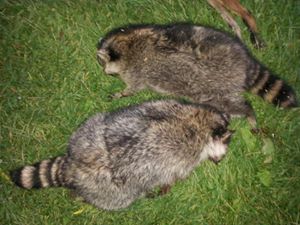
The dirt hole set is my favorite, for it is quick and easily made and will get more fur than any other set, however it has one big drawback, when used in the fall during freezing weather, it sometimes fails to work.
Usually tho, the major part of ones skunk, coon and possum trapping is done before heavy freezes, so if set is made as instructed, few catches will be lost due to freezing.
After you have chosen a location for your set, which must be where the animals travel or feed, and up wind from that vicinity, dig a bed the shape, and somewhat larger than the trap, dig it deep enough so the trap sets below the level of surroundings. After bed is right depth, line the bed with dry needles or grass as previously explained, bed trap so it sets firmly, place a dry leaf or piece of waxed paper over the pan, under the jaws. Now if no danger of freezing, cover the trap with one-half inch of soft earth, if danger of freezing, cover trap with dry needles, , cover lightly with the needles and then finish with just enough soil from the bed to blend the needles with surrounding: when trap is thus set, dig a hole about 5 inches in diameter and 6 inches deep just back of the trap, dig it at a slope of 45 degrees so it is necessary for the animal to step on the trap to smell or see down into the hole.
A few branches and twigs may be placed each side and back of the trap if one wishes.
If trap and vicinity is free of foreign odors, many fox will be taken in sets so made. Place bait and lure back in the hole.
Water Hole Set
The water hole set is fine for raccoon as well as mink, it is made by digging a hole about 5 inches in diameter, in the bank of a stream, lake or body of water, the hole is dug straight back in the bank in such a position that there is 2 inches of water in the mouth of the hole, trap is set under water about six inches in front of the hole, bait and lure are placed back in the hole, being sure it is placed above the water.
Trail Sets
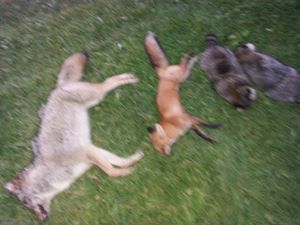
Fox and Coyote taken from raccoon sets that had dyed and waxed traps and good anchor system.
It is not at all necessary to spend time hunting for the trails of any animal one wishes to trap.
In trapping raccoon, skunk, opossum, the cubby or hole will take them all, however if one wishes to make a trail set, here is how to make it correctly.
After finding a trail used regularly, choose a place where the animal steps over a small log, or place a small log about 2 inches in diameter across the trail.
Exactly where the animal will step over the log, dig the trap bed as explained in the dirt hole set, line the bed with needles, and cover as explained in the dirt hole set.
Where trail trapping, no bait or lure is used, however one may set 2 traps about 20 feet apart and place a bait between them in the trail.
Log Crossing Set
If one is trapping along small streams, one often finds a log laying across the stream that is used regularly by coon, skunk and opossum, as well as other animals.
A trap set at each end of the log where they approach, or leave, is a productive set, it however has a drawback, for logs used by furbearers are also used by rabbits, dogs, cats, porcupines and such animals.
Ear of Corn Set for Raccoon
Here is a set that will bring surprising results. Occasionally one finds where raccoon are following along the bank of a stream or body of water, probably hunting for frogs, fish and other food.
When such a place is found, choose a place where the water is about 3 inches deep out from the shore a foot.
Set the trap one foot from shore, using a stick about 2 feet long stick an ear of corn on one end, press other end in stream bottom one foot out in stream from the trap, leave the ear of corn about 6 inches above water, place a few drops of lure on the corn. As the coon follows the bank, it scents the corn and lure, as it enters the stream for the corn, it becomes caught.
The Weasel
Little need to be said of trapping weasel, however there are several important factors that should be given due consideration.
Traps should be very clean and dyed to prevent rust, traps should be very lightly oiled with chicken, duck or goose oil, or with cod liver oil, never with gun oil.
Wind direction should be given consideration. One depends on the wind carrying the odor of bait and lure across the path of the weasel, and last, but of most important, is this, remember it: Weasel have travel routes, just as surely as do deer or coyotes, weasel follow these routes, taking in the same feeding places, such as old stone or stump fences, high grass along a fence, bunches of grass in a field, old haystacks, old buildings, etc., etc., because at such places are where the mice are most numerous: Mice are the principal food of the weasel.
Never set a weasel trap unless you know it is on the travel and feeding route of a weasel.
Always set weasel traps where weasel are known to have passed through before: They will be back, possibly not for two weeks, but they will surely be back through, if yet alive.
There is only one method I use in trapping weasel, it is a least 5 times as successful as any other I have tried, that method is by using small wooden boxes in which to set my traps.
The use of small boxes enables one to set traps quickly and easily, and exactly in the travel route of the weasel.

Results of a weasel box lured with Lenon's Weasel Super All Call Lure
Once set, the traps will work all winter, regardless of rain, snow or sleet, the traps are not sprung by rabbits, dogs, cats, bluejays, Canada jays or such, which are the curse of the weasel line.
If holes are drilled with a 1 ½ inch drill, one is not bothered with red squirrel or flying squirrel to any great extent.
A few boxes should have a 2 ½ inch hole, these to be set where the sign of one of those big old extra large weasel are found, or along a stream where there is a possibility of getting a mink. When I trap weasel, I just drive down the road in my car, about 3 or 4 days after a fresh snow, when I see where a weasel has crossed the road, or fed at some haystack, etc. etc., I jump out, set the trap under an evergreen tree, behind a big log, stone or whatnot, wherever it is protected somewhat from drifting snow, and am on my way. I can set 50 traps a day that way.
Next year, if weasel pelts are a good price, like this year, I plan to run a 100 mile line, with 20 dozen traps: If I do, I expect 400 to 500 weasel, form Dec 1 to March 1.
Many trappers use wooden rat traps, they place a small bait on the trigger, and nail them to the side of a tree, moving them up as the snow gets deeper.
I have tried the wooden rat traps, and find that I have at least 5 times as may weasel, and one-fifth as many birds, mice, etc , with the rat traps.
The boxes cost about $1.50 a dozen for material.
To make, buy, or cut two pieces of 1 inch lumber, 6 inches square, four pieces of ½ inch lumber, 1 foot long, nail the lumber to three sides, in the top piece, use one 6 penny box nail, nail it in one corner, so you can swing the cover around, see picture.
To fasten the cover, use 4 inch pieces of leather, cut it from old shoes, boots, etc., nail the leather to the top with a carpet tack, cut a button hole in he other end, use another carpet tack in the end for the button.
Have the hole for the weasel to enter, on the opposite end from the one fastened with the leather strip.
Drill the hole in the end piece, near top, before making the box.
If you have no drill, you can make two cuts, with a saw, each tow inches long and two inches long and two inches apart, across the grain of the wood, in center of one end piece, as it is sawed cross grain, this piece can be easily broken or split out, thus making a two by two hole in the center of the top side of one end.
Set the trap inside the box and below the hole, right where the weasel will land on it as it comes in the hole.
In the rear end, drive a headless finishing nail on which to hang the bait.
Fasten trap to rear end using a small chicken wire staple.
Proper Trap Size
For raccoon, opossum and skunk, the size 1 ½ is often used, however I strongly recommend a larger trap with double jaws as the value of one good pelt, that is lost because the animal has escaped by pulling free, or by chewing the food off below the jaws, will pay the difference in price between a dozen, or several dozen smaller traps.
My favorite was the number 215X triumph, as it is not made now, I recommend the new number 22 victor trap with double jaws. For weasel the proper size is the size 0, however if one has the number one or one and on half, they may be used.
I have ten dozen size 0 traps, they cost only a little over two dollars a dozen, I have the jump type Oneida.
Baits and Lures
The bait I have found best for raccoon, skunk and opossum is fish, with offal from chicken next best.
If you live where commercial fishermen operate, you can procure soft fish or fish offal for bait.
As in Northern states, skunk, opossum and raccoon are often denned up when season opens, coming out but on warm nights, here is a way to triple ones catch.
Starting a month before season, establish feeding places, these feeding places may be established by placing fish offal, beef heads and bones from the slaughter house, or if you trap fox and coyote before then, their carcasses may be used.
Keep feed at these places and the coon, skunk and opossum will start eating there early.
When such as feeding place is being used, they will often continue to feed there for two weeks or more after they would otherwise have denned up for the winter.
Several good sets should be made around such a place that is being visited.
For weasel I prefer rabbit to any other bait, however rabbit is prohibited for bait in some states.
Next to rabbit, fresh muskrat is best with fresh chicken offal third best.
Purchase Lenon's Fresh Muskrat Meat Bait for Mink, Otter, Raccoon & Weasel Bait
Purchase Lenon's Fresh Muskrat Meat Bait for Mink, Otter, Raccoon & Weasel Bait
Bait should be kept fresh for weasel.
If you have butcher friend, have him save you a gallon of fresh blood for your weasel traps, keep the blood where cold or frozen.
Raccoon Lure
One ounce canton musk, 2 ounces honey, 5 drops anise, one-forth ounce phenyl acetic acid, one ounce of thick rotten fish. Use one-fourth teaspoon at set, believe me it will get them.
Purchase Lenon's Raccoon Super All Call Lure
Purchase Lenon's Raccoon Super All Call Lure
Opossum Lure
One rotten egg, a duck egg if possible, one ounce rotten fish, one ounce beaver castor, 10 drops oil rhodium. Let set for a month after mixing, stir often, use ¼ teaspoon.
Lenon's Skunk and Opossum Super All Call Lure
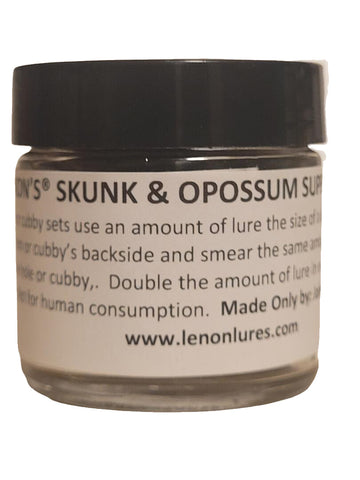
Lenon's Skunk and Opossum Super All Call Lure
Skunk Lure
One ounce beaver castor, one fourth ounce fluid asafoetida, one-eighth ounce skunk musk, three ounces thick rotten fish. Let set one month, stir often, use one-fourth teaspoon.
Lenon's Skunk Super All Call Lure
Weasel Lure
One ounce each beaver castor and muskrat musk, 6 weasel musk sacks, 3 ounces rotten fish. Let set one month, stir often, use ten drops on fresh bait.
Purchase Lenon's Weasel Super All Call Lure
Purchase Lenon's Weasel Super All Call Lure
Trapping Books Written By Herbert Lenon FREE online versions.
- Secrets of Successful Trapping Fox, Coyote, Bobcat Trapping by Herb Lenon
- Beaver and Otter Trapping Book Online by Herbert Lenon
- Mink and Muskrat Trapping Book Online by Herbert Lenon
- Raccoon, Opossum, Skunk and Weasel Trapping Book Online by Herb Lenon
Lenon Lures Online Product Catalog
Thank You Trappers for making us your top choice for the last 100 Years! Lenon Lures Established 1924
Herbert Lenon and John Chagnon Trapping and Fur Handling Videos Dvd's
Herbert Lenon and John Chagnon Trapping and Fur Handling Videos Dvd's
Ebay carries all of Lenon Lures® products and is a great place to find deals on all kinds of used and new traps & trapping equipment for raccoon, weasel and skunk trapping at great prices.
Follow the links below to some more great trapping information ...
- Secrets of Successful Trapping Fox, Coyote, Bobcat Trapping by Herb Lenon
- Beaver and Otter Trapping Book Online by Herbert Lenon
- Mink and Muskrat Trapping Book Online by Herbert Lenon
- Raccoon, Opossum, Skunk and Weasel Trapping Book Online by Herb Lenon
- Herb Lenon Trapper's Hall of Fame Article
- Herb Lenon 1947 Full Page Ad in Fur Fish Game Magazine
- How To Trap Fox & Coyote - Herb Lenon and Asa Lenon
- Mink Trapping by Herb Lenon Article 1946
- Trapper's Bible of Trapline Secrets, Sets and Knowledge by Herb Lenon
- Monthly Tips on How To Trap by John Chagnon & historical writings Herb and Asa Lenon of Lenon Lures

